Their Alabaster Chambers
by Daniel Fairfax

Terence Davies. A Quiet Passion. Feature film, 2 h. 5 min.
The phrase “British cinema,” François Truffaut once notoriously said, was a contradiction in terms. If ever there was a filmmaker whose body of work set out to disprove this theorem, it is Terence Davies, whose work is both anchored in the cultural heritage of the UK and permeated by his eminently cinematic sensibility. And yet, while his British roots have remained firmly in place over the last four decades, the Liverpool-born director has also been known to make rare forays across the Atlantic. Each time, curiously, it has been American literature that has beckoned him to the New World, and this trend continues with his latest film: A Quiet Passion (2016), a cinematic biography of Emily Dickinson.
The fact that A Quiet Passion has followed on so quickly from Davies’ previous release, Sunset Song (2015), is a minor miracle for devotees of the filmmaker, who have had to become used to fallow periods in his oeuvre. After The House of Mirth in 2000, a critical and commercial success, Davies did not complete another fiction feature until 2011’s The Deep Blue Sea. (Only Of Time and the City, a 70-minute documentary collage of scenes in Liverpool, was made to tide them over.) The hiatus was not a voluntary one: Davies has spoken bitterly of his difficulties finding support from British film funding bodies, who under the Blair, Brown, Cameron, and now May governments have turned to a neoliberal model of backing only “profitable” ventures. We could have despaired, therefore, that another decade would pass before another project would reach fruition. Thankfully, this has not been the case.
Their chronological proximity would be enough to establish Sunset Song and A Quiet Passion as a cinematic diptych, but the two films also have far greater resonances. Thematically, both films center on women protagonists chafing against the oppressive nature of Victorian-era gender roles. Narratively, they both draw on the literary canon for their source material — where A Quiet Passion delves into the life of Emily Dickinson, Sunset Song is an adaptation of a 1932 novel by Lewis Grassic Gibbon, who is something of a Scottish Balzac. Stylistically, they both pursue Davies’ inimitable approach to film form, particularly the lilting, musical cadences in the tempo of his films, and the painterly, colorist approach to their cinematography. As cinematic as both films unquestionably are, the rigor of the framing and vivacity of the imagery in Sunset Song and A Quiet Passion mean that they can equally be viewed as a succession of tableaux unfolding across the screen.
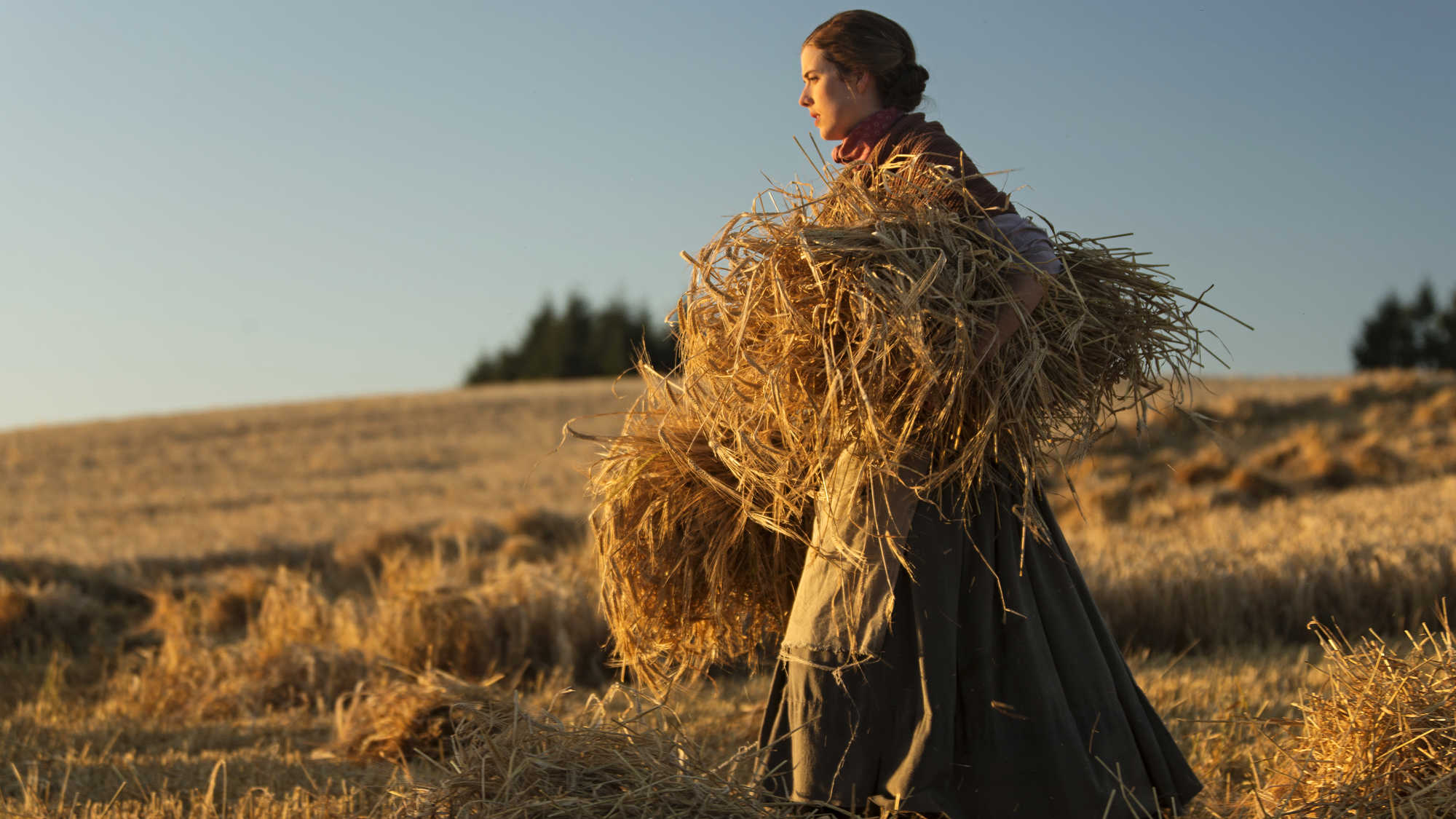
With a recurring concern for the quotidian affairs of lower-class English life, a focus on the family unit (in all its tenderness and violence), and a self-confessed inclination towards a miserabilist outlook, Davies has frequently been placed within the tradition of “kitchen-sink” realism that flourished in postwar British theater and cinema. In truth, his visual finesse, queer perspective, and preoccupation with questions of time and memory markedly distinguish Davies from the likes of Ken Loach and Mike Leigh, or, earlier, Karel Reisz and Tony Richardson, and bring him closer to the melodrama of Max Ophüls, Vincente Minnelli and Kenji Mizoguchi. Like his countrymen, however, Davies has had to reconcile unstinting critical esteem for his films with perennial struggles to reach wider audiences. The consecration of his work into the national cinematic canon, meanwhile, contrasts with his relatively low profile internationally — something that we have to hope will change with the release of A Quiet Passion, due out this winter in the United States.
Now 71, Davies has been making films since the 1970s, and he is still best known for Distant Voices, Still Lives, his song-saturated 1988 memoir of proletarian life on Merseyside. From the perspective of 2016, however, his fiction films divide neatly into two chronologically distinct categories. In the first period, stretching from the three shorts known as the Terence Davies Trilogy (1976–83) to The Long Day Closes (1992), autobiography is pushed to the forefront. Based on original scripts by Davies, these early films predominantly focus on young men grappling with their sexuality, and take place in the Britain of Davies’ own time, though it’s a subjective past, warped by the distorting effects of memory and nostalgia. The queer content of these films is openly avowed, directly depicted. They hew closely to the filmmaker’s own experiences growing up in an Irish Catholic family headed by an abusive father (who died when Davies was seven), in a nation that had just emerged from the traumas of World War II.
The Neon Bible (1995), his first literary adaptation, is something of a transition piece. This is also a coming-of-age film, whose adolescent central character can be read as a cipher for the filmmaker, but now Davies takes us to the American Bible Belt. It is with The House of Mirth, his adaptation of Edith Wharton’s novel starring Gillian Anderson, however, that a distinct shift truly emerges. From now on, the key figure at the center of his films will be a woman. Davies’ conflicted stance on homosexuality — he has candidly stated that he “hates” being gay and has remained celibate for most of his life — is now sublimated into female protagonists struggling against stifling patriarchal systems. Moreover, these films tend to be set long before the director’s birth: The House of Mirth and Sunset Song both take place in the early 20th century, A Quiet Passion in the mid-19th. Only The Deep Blue Sea, with its World War II setting, lies in proximity to Davies’ own time, and out of the four films it is the one most weighed down by a nostalgic sentimentality. Finally, all four films in Davies’ “second period” (discounting the non-fictional Of Time and the City) owe their provenance to external texts, with Edith Wharton and British playwright Terence Rattigan joining Dickinson and Gibbon as sources of inspiration.
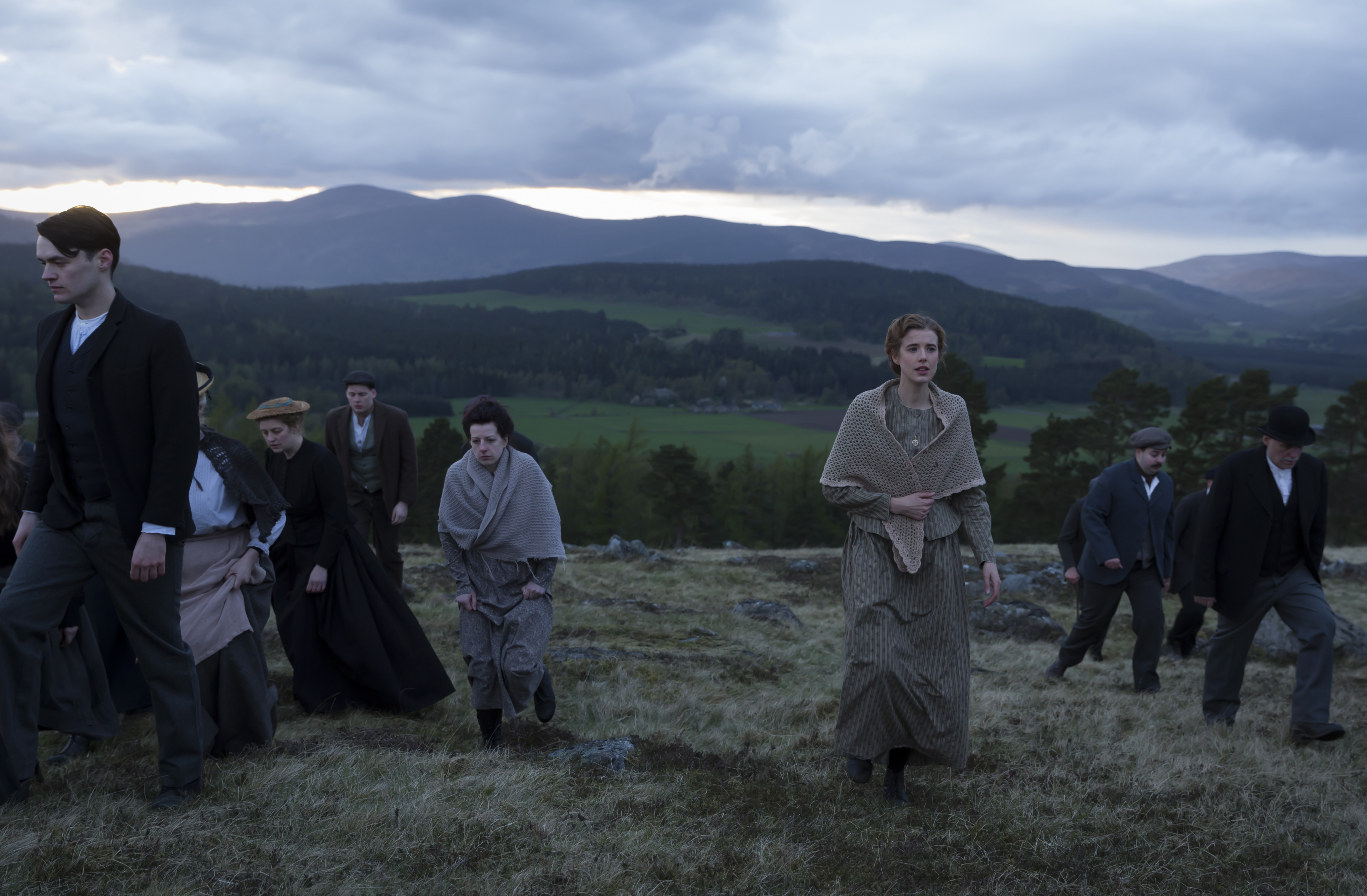
With a storyline spanning the years leading up to World War I, Sunset Song is set in the fictional farming community of Kinraddie in the Scottish Highlands (although, for financial reasons, most of the filming took place in New Zealand). The model Agyness Deyn incarnates the heroine, Chris Guthrie, and while the casting may lend the film a bit of star power, Davies insists on his profound unfamiliarity with pop culture: he had never heard of Deyn before her audition, but was transfixed by her ability to “look old and young at the same time.” (This is a habit with Davies; when he cast Anderson as Lily Bart in The House of Mirth, he explained that he had never seen The X-Files and was drawn to her for her resemblance to the women in John Singer Sargent portraits.) Deyn lends her character a pallid ethereality and a gamine-like innocence. Even when falling victim to the stern brutality of her father, or the unwanted sexual advances of day laborers, she can still take infinite joy from basking in a meadow, gazing upon the reflection of a mountain in a pond, or singing a folk melody.
Grief and opportunity coincide for Chris, who is obliged to work the family’s land despite her desire to become a schoolteacher. When her father dies, her brother Will has already eloped to Argentina to escape his physical abuse, and Will’s absence gives Chris control over the family property and the possibility of economic independence. Her ensuing marriage to Ewan, a local townsman, is initially a happy one, but the couple’s momentary bliss is cut short by the incursion of history: with the outbreak of war, Ewan is constrained to enlist in the army. A brief return home on furlough sees the irascible husband, traumatized by his military experience, bring violence back to Kinraddie, his vicious treatment of Chris culminating in a marital rape. Tragedy will strike again, this time leaving the film’s melancholic heroine truly alone as the sun sets over the Highlands.
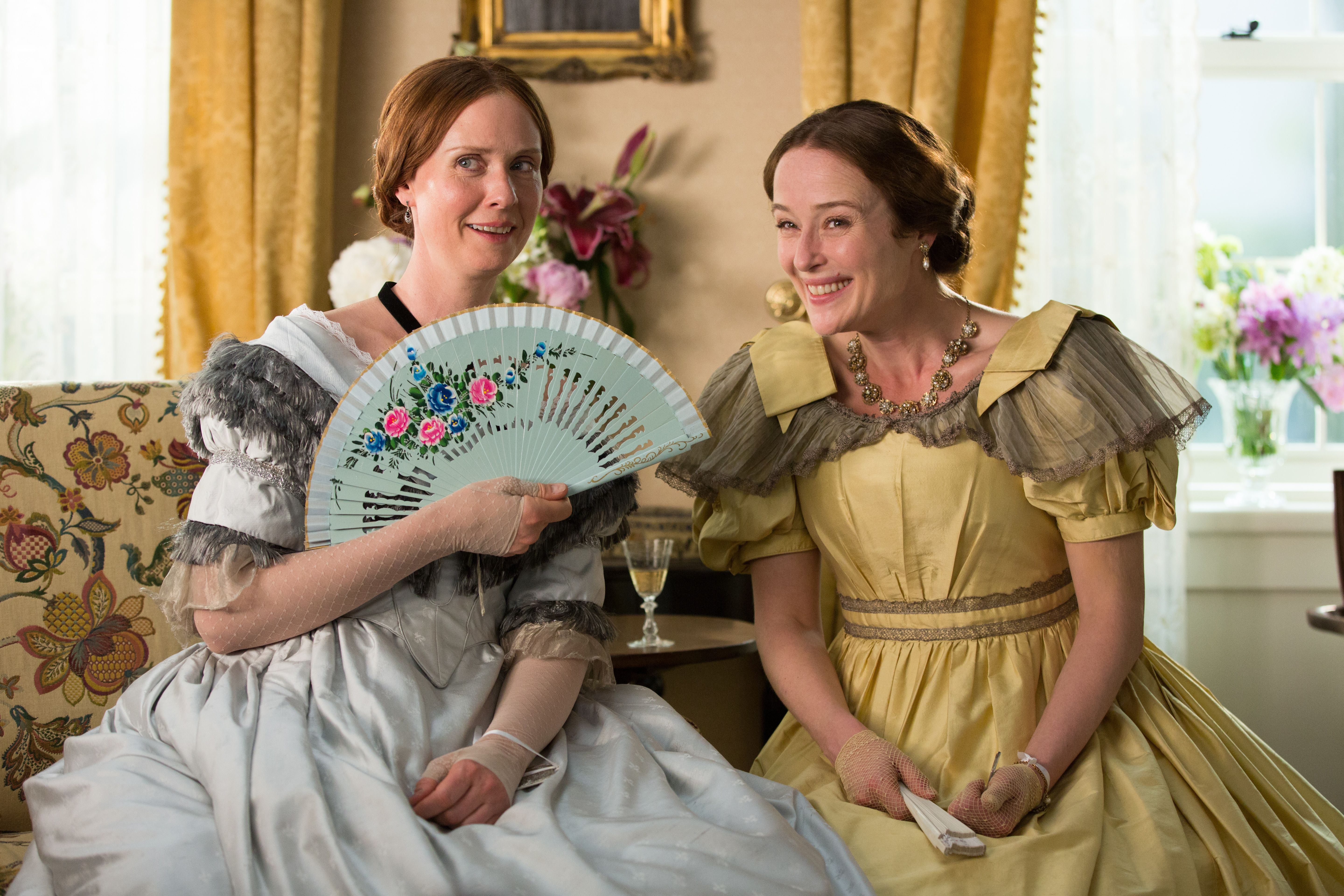
A Quiet Passion offers a similar biographical sweep. Here we follow the life of Emily Dickinson, from her teenage insolence at Mount Holyoke, refusing to toe the line during the academy’s mandatory religious instruction, to her agonizing death from kidney failure at the age of 55. Cynthia Nixon plays the poet — and again, the motivation for Davies was due less to her status as a pop-culture icon (he at least admits to having seen Sex and the City, which he detests) than to physiognomy, to the remarkable physical resemblance he perceived between Nixon and Dickinson. Drawing from her poetry, correspondence, and multiple biographies, Davies departs from the traditional image of the poet as a morbid loner. Instead, aided by Nixon’s deft feel for comic acting, his Emily has a childlike playfulness and open-eyed wonder at the world, engaging in bawdy banter with her sister Lavinia (Jennifer Ehle) and their friend Vryling Buffam (Catherine Bailey), a quick-witted libertine and spiritual cousin of Anderson’s Lily Bart. Unlike so many other Davies protagonists, Emily does not suffer from the cruelty of a sadistic father. Instead, the Dickinson paterfamilias is rendered with kindly forbearance by a whiskered Keith Carradine, who indulges his daughter in her request to spend the hours before dawn writing poetry, and only upbraids her for treating the family’s domestic help as servants rather than employees.
In Davies’ words, Emily’s sensitivity is such that she “has one skin missing,” and her response to a series of emotional traumas — America’s descent into civil war, the deaths of her parents, the departure of a sympathetic reverend for whom she had developed a rare romantic attachment, and a perceived act of betrayal committed by her brother — lead the once bubbly heroine ever deeper into social reclusion. Taking solace in her poetry, Emily refuses to leave her family’s New England estate or to venture downstairs when callers come. Close to the end of the film, she even remarks to Lavinia, “You see what a vile person I’ve become?” As the film draws to its conclusion, the poet who wrote so powerfully about death succumbs to its embrace.

Evidently, then, neither Sunset Song nor A Quiet Passion is bereft of narrative developments. Davies is not quite the plodding minimalist that so many of his detractors paint him out to be. And yet his films seem equally determined by visual dynamics, particularly his distinctive use of color. Each Davies film presents a unique palette that both distinguishes it from the rest of his oeuvre, and sets his body of work as a whole apart from the prevailing conventions of social realism. Whereas so much present-day arthouse cinema conforms to a muted, dingy grisaille, Davies’ saturated, expressive colors bellow the influence of painting more overtly than nearly any other contemporary filmmaker. (There may be a few other exceptions: Aleksandr Sokurov, who has filmed features at the Hermitage and the Louvre, or, in a totally different vein, the Vermeer-besotted Peter Greenaway.)
After the ashen charcoals of the black-and-white shorts, his films all work with dominant color schemes, offset by contrapuntal inversions for narrative and emotional effect. Distant Voices, Still Lives, for instance, is notable for the predominance of coral-filtered browns and beiges, redolent of the interior scenes of Walter Sickert and other painters of the Camden Town Group, in which he renders the shabby despair of working-class households in the yet-to-deindustrialize north of England. But this murky backdrop is punctuated by the bright scarlet of the female characters’ lipstick and nail polish, a dash of Technicolor glamour that even impoverished Scousers could afford, and which, as a recent monograph on Davies puts it, “allows the female characters to stand out like red smears on a gray canvas.” Later, The House of Mirth makes use of bronzes and olives explicitly indebted to Sargent. When Lily poses at a wedding in a tableau vivant after Watteau’s Summer, the soft pinks and blues of the French artist’s original painting are replaced by lush, coppery yellows.

Right: Terence Davies. The House of Mirth. 2000. Feature film. 2 h. 20 min.
With its exteriors filmed on luxurious, rarely used 65mm stock, Sunset Song is drenched in golden hues: most notably in Deyn’s flowing locks of flaxen hair, as well as the expansive fields of wheat that seem to be her character’s natural habitat. At a time when plows were still pulled by draft horses and herds of sheep could be driven through a town’s main street without a fuss, the bucolic vision of rural northeast Scotland presented by Davies recalls the pastoral tradition of Jean-François Millet, whose depictions of farm life in 19th-century France deploy a similar range of yellows and oranges. In another artistic tradition entirely, Sunset Song’s most idyllic moments even come close to Stalin-era films such as Bountiful Summer (1950), with ruddy peasants merrily tilling the sun-kissed paddocks. Davies’ film, of course, has a much darker side than the Soviet tractor musical could allow: when Chris’s father perishes, the Guthrie household is submerged in the unforgiving black of mourning, and Davies’ framing correspondingly becomes suffocating in its severe frontality. Similarly, when news arrives of Ewan’s execution for desertion, the images of his death by firing squad on the Belgian front are murky, denuded of color, and relentlessly bleak.
A Quiet Passion shifts the palette considerably. Here, in place of the golden pastures of Scotland, the verdant greens of New England preponderate. (While a few scenes were filmed in Massachusetts, the bulk of A Quiet Passion was shot in Belgium.) The lush vegetation of the Amherst estate — “I hide myself within my flower,” one Dickinson poem begins — is complemented by the mints and teals of the decor and, above all, the costumes in the film. The women of A Quiet Passion are garbed in turquoise taffeta dresses with matching fans and parasols, while the men are swathed in layers of bottle-green velvet finery. If Sunset Song’s hues evoke the unique luminescence of the last gasps of daylight, A Quiet Passion’s viridescent tinting gestures to the pre-dawn hours in which Dickinson wrote her poetry, as denoted by the glaucous light in which Emily’s room is bathed when she asks her father for permission to keep her unusual daily schedule.
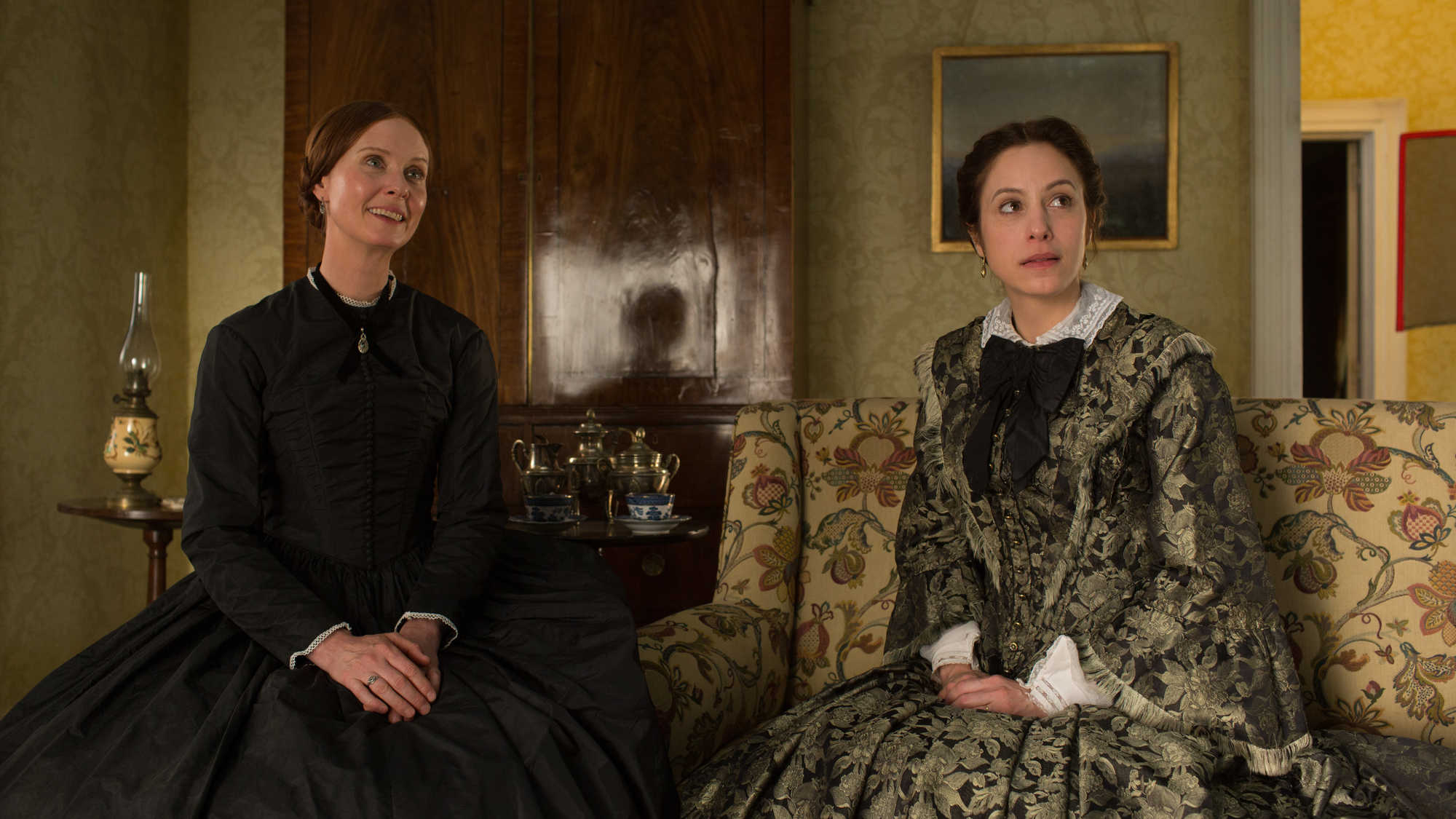
Like Sunset Song, however, A Quiet Passion witnesses a reversal of its coloration: here, as Emily ages and becomes more embittered, the previously dominant colors are evacuated from the film. The protagonist herself takes to dressing only in white (a sartorial practice the real-life Dickinson famously adopted), and the house itself seems to become drained of its touches of color. In one striking scene, the frame is even invaded by an alien rufous glow as the full extent of Emily’s capacity for callous misanthropy becomes clear to her. The two films are also united by their shared opposition between interior and exterior scenes, each possessing distinct lighting schemes: the flickering, Vermeer-like luster of the lamp-lit chambers contrasts, in both films, to the dazzling refulgence of the outside world. Throughout Davies’ work, exteriors represent emancipation, interiors the oppressive restrictions of society and the family — although in Dickinson’s case such confinement is, it seems, primarily self-imposed. Windows, the boundaries between these two realms, are a motif in all his films, and his latest diptych is no different. Characters gaze out of them in longing, curiosity, or fear, while dust-speckled light floods in through them, bringing warmth and vitality. But whereas Chris revels in the moments of liberation she snatches when dreamily wandering through a field, Emily eventually shuts herself off from the menaces of the external world, with its mortality and suffering, and retreats to the inner world of her poetry.
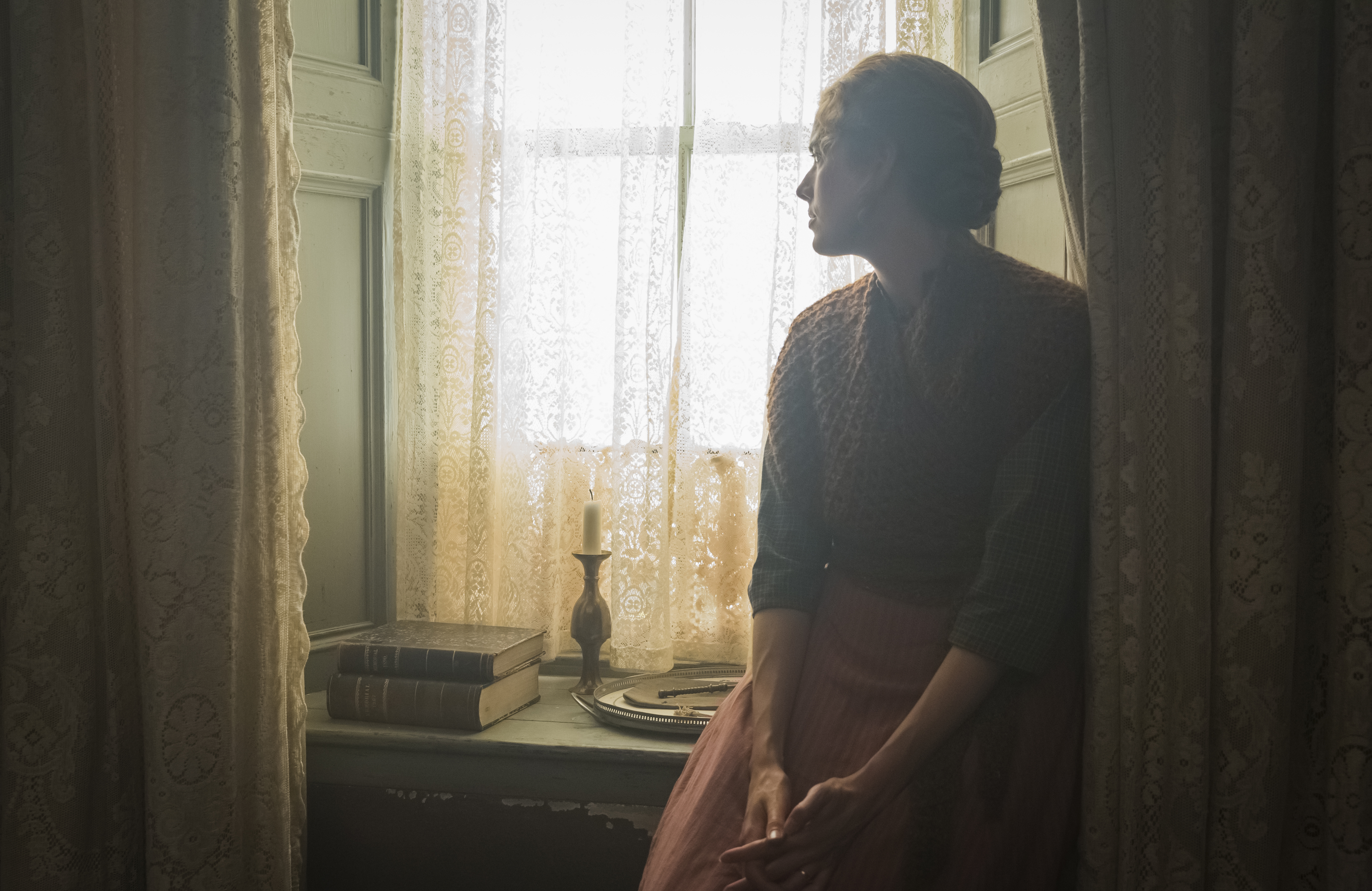
Underscoring their status as two panels of a structurally symmetrical diptych, both films conclude with abstract passages reflecting on death, sorrow, and the cycles of nature. Both dénouements are set to music: Sunset Song uses the Scottish folk song “Flowers of the Forest,” and A Quiet Passion features Charles Ives’s orchestral work “The Unanswered Question,” whose radically discordant polyphony, with three separate ensembles playing in independent tempos, mirrors the experimental nature of Dickinson’s verse. But Davies only uses the string section, excising the interpolations by woodwind quartet and solo trumpet. Instead, the contrapuntal effects come from the other elements of the film. We see images of Emily’s corpse lying in situ, the camera moving slowly over her white-clad body as her weeping sister lays a posy of flowers beside her. A dissolve leads to an overhead shot showing her coffin being carried into the hearse, in preparation for her burial before a small coterie of mourners. On the soundtrack, her voice acoustically jostling with the Ives piece, Nixon reads out Dickinson’s most famous lines:
Because I could not stop for Death—
He kindly stopped for me—
The Carriage held but just Ourselves—
And Immortality.
Nixon recites passages from her work in frequent voiceovers, and the presence of Dickinson’s poetry in A Quiet Passion gestures to one way in which the new film departs from Sunset Song, The House of Mirth and The Deep Blue Sea. If all four of Davies’ most recent works depict women living under sexist social orders, only one of them presents us with an artist—albeit one whose genius went unrecognized during her own lifetime. The restless perfectionism that drives Dickinson’s aesthetic production simmers under the surface throughout the film: when she is told, for instance, that her bread-loaf won second prize in a local baking competition, the look of wounded pride on her face speaks volumes about the ambitions she held for her writing.
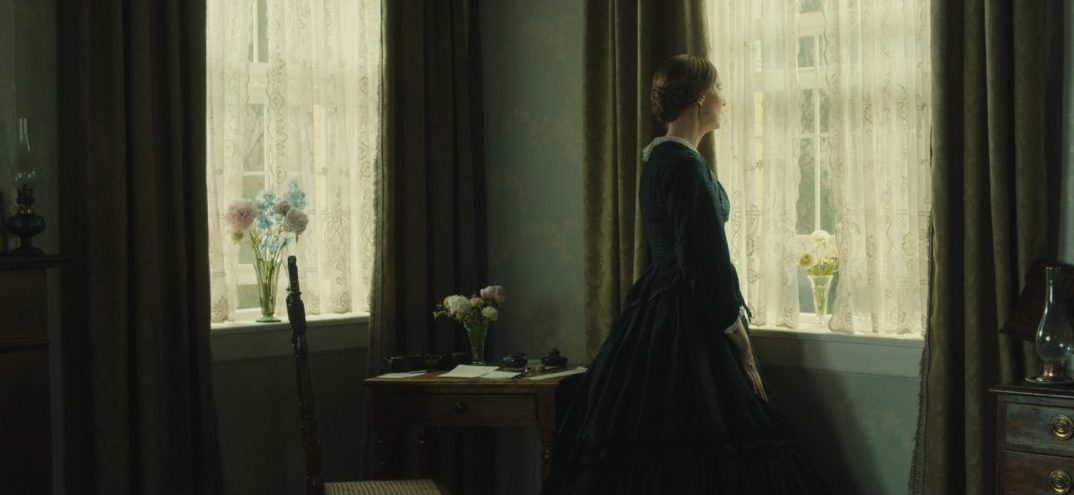
Dickinson’s poetic perceptiveness also informs the rare acuity with which she understood the condition of women in the 19th century. After her brother laments the death toll of the Civil War — which Davies shows through a montage of colorized photographs from the conflict — Dickinson compares the situation of southern blacks to the servitude of women: “Gender too is slavery,” she pronounces. The language is deliberately anachronistic. The Dickinson of A Quiet Passion is a poet, but she is also a feminist, and her views anticipate the great struggles for women’s liberation of the next century and our own.